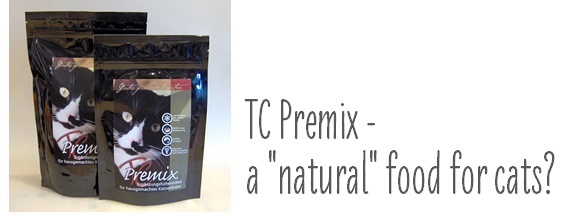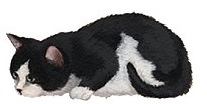

The definition of the word “natural” in association with a food or diet for people or animals is a subject of interpretation. The question of whether a food is natural needs to be defined by specifying if you wish to know if the ingredients are of natural origin or if it is natural for the species in question to consume this food. For example: “Natural Food” in the dictionary is defined as “Food that does not contain any additives, such as preservatives or artificial coloring”. Scientific experts clarify the use of the term “natural” on products during the Institute of Food Technologists “Best of Food Thinking” Annual Meeting and Food Expo held on June 30, 2008 in New Orleans. Despite the term’s widespread use, the U.S. Food and Drug Administration (FDA) discourages the food industry from using “natural” on labels because of its ambiguity. “Natural may unjustifiably imply that a food is of superior quality or safety compared to other similar foods”, said the FDA’s Ritu Nalubola. Neither FDA nor the U.S. Department of Agriculture (USDA) has precise rules for “natural.” And the food-and-beverage product industry, represented by the Grocery Manufacturers Association, has no consensus. In 1991, FDA tried to define the term and, by 1993, gave up. The agency decided to “not restrict the use of ‘natural’ on products. It is a very complex term,” Nalubola said. Today FDA is continuing that practice, originated in 1988. For a product to be called natural, it must be free of artificial or synthetic ingredients or additives, including color, flavor or any ingredient “not normally expected.” Hence, lemonade flavored with beet juice cannot be called natural. In addition, any food enhanced with caramel, paprika or color (consider bright orange cheese) cannot be called natural.
(Source: © 2009, Institute of Food Technologists)
The TCPremix and the resulting homemade diet is not a “natural” diet for cats, but it is manufactured from natural ingredients. Mice and other prey are the only natural food for cats – and only when caught live by the cats themselves.
Anything we prepare for our cats – regardless of the best intention of wanting to keep it natural – can never be natural in the end. In fact, cats living with people is not natural either. So, since we have already deviated from “natural” in nearly all aspects of the domestic cat’s existence, we can now focus on providing them with the best care we know how.
We study the natural diet of cats as a model, but the cat food resulting from using the TCPremix mimics the nutritional composition of a mouse on a nutrient or molecular level, rather than in outside appearance. Not making use of the high quality supplements and food ingredients developed and available for people to meet the nutritional needs of cats would be foolish, although the nutrients within would not be delivered to cats in this form when hunting mice.
Some customers are particularly curious about our inclusion of minerals and whey protein derived from milk in the premix, because dairy has received a tremendous flag in our society during the past decade. For all the people who say that all ail has their root in dairy, equally many scientific studies demonstrate, that nutrients from milk are life savers.
The TCPremix does not contain milk, but we do make use of the most bioavailable minerals and amino acids found in nature. In our opinion, whey protein represents a beneficial and important ingredient in the diet of cats not eating a “natural” diet (mice), because whey protein is the most biologically available source of protein, has a complete amino acid profile, and provides the highest value of branch-chain amino acids. Any meat you feed to your cats will have a different amino acid profile than a mouse, especially chicken and rabbit, although you probably thought those meats would be “natural” foods for your cats. Cats may eat some rabbits and birds “in the wild”, but these animals are not their main menu, but are only hunted when the opportunity arises. Commonly, our addition of whey protein is misunderstood as an attempt to increase overall protein levels in the food – which would certainly be a real “head scratcher”, considering that TCPremix prepares a MEAT BASED diet! All proteins are not created equal, and the presents of proteins in your cats’ diet from meat does not mean your cats are actually getting all essential and beneficial amino acids. We add whey protein to the premix for the many scientifically proven health benefits it provides. Whey protein may be most popular to repair and build muscle, but it has also been discovered that whey protein is useful for weight loss, specifically fat loss. It enhances immune function by increasing important glutathione levels. Whey protein has been researched in preventing some forms of cancer and other degenerative diseases. It may help T-cell activity and decrease wasting tissues during illness and therefore increase well-being and the speed of overall recovery. It is used in the recovery of burn victims, and to nurse and maintain the frail and elderly. It helps build bone, and enhances antioxidant function. It is disappointing to learn, that the highly reactive Internet forum community has their binders on, and continues to misinterpret the function of some of the ingredients in the premix, and as a result spreads misinformation.
You are defending your own raw meat cat food recipe, or product derived from it, against the original creator of the very recipe or formula. The TCPremix is the result of further development of North America’s most popular raw meat cat food, in the hands of the same person who insipred it in the first place over a decade ago. Why would we want to strive for anything but the best at this point?
We choose a milk mineral complex as the source of calcium in TCPremix, TCPremixFibre, and TCPremixPlus, because the calcium from milk is Calcium Phosphate – just like in bone, naturally chelated and in the presence of other essential minerals for optimal absorption by the body. Mammals, including cats, may not naturally drink milk past their juvenile age, but minerals found in milk are nonetheless natural to mammals and unequalled in building and maintaining bone, and supporting essential bodily functions down to the beating of the heart! For our TCPremixBasic we choose Calcium from whole bones as the source of calcium. Calcium from bones deliver all the elements present in healthy bone tissue and in their correct physiological ratios, making it a complete and effective bone health ingredient. A single, isolated calcium supplement can not do this. A single calcium supplement is deficient in every way and anything but natural. The first of many problems with a single calcium supplement is that it acts like an antacid – disabling the cat’s ability to properly break food down in the stomach.
Since it appears nearly impossible to feed domestic companion cats a truly natural diet, we may as well feed our cats the best diet possible – which is what we are striving for nearly 15 years. Cats may have evolved over 40 million years to eat mice, but once food is in the stomach, the body only recognizes nutrients, and not the outside form in which these nutrients were delivered. As a mouse or a homemade diet makes no difference. In the end, we have proof that cats thrive on our “unnatural” homemade diet just like, if not more so than their mouse-eating, wild-living relatives, who lack the life expectancy of our domestic cats, and who are exposed to a host of debilitating parasites through their “natural” food. 
Reference
Natascha Wille, Feline Nutritionist
![]()

 Deutsch
Deutsch
